What is “transformational” learning – and what makes it work?
Three essential ingredients that turn Six Seconds’ certification courses programs into life-changing learning experiences
What is your goal with learning? Is this entertainment? Or are you working to impart information?
Or do you want some change, some transformation, as they actually APPLY the learning?
At Six Seconds, learning is a process of change. We’re here to make a difference in the world by growing emotional intelligence — and for us, that goes beyond “knowing.” We want a billion people practicing emotional intelligence… so we’ve distilled 50 years of learning-about-learning into practical frameworks that make learning into a transformational process.
Explore the three ingredients, and continue below:
1. Structure for change
2. Clarify the how
3. Use their brains
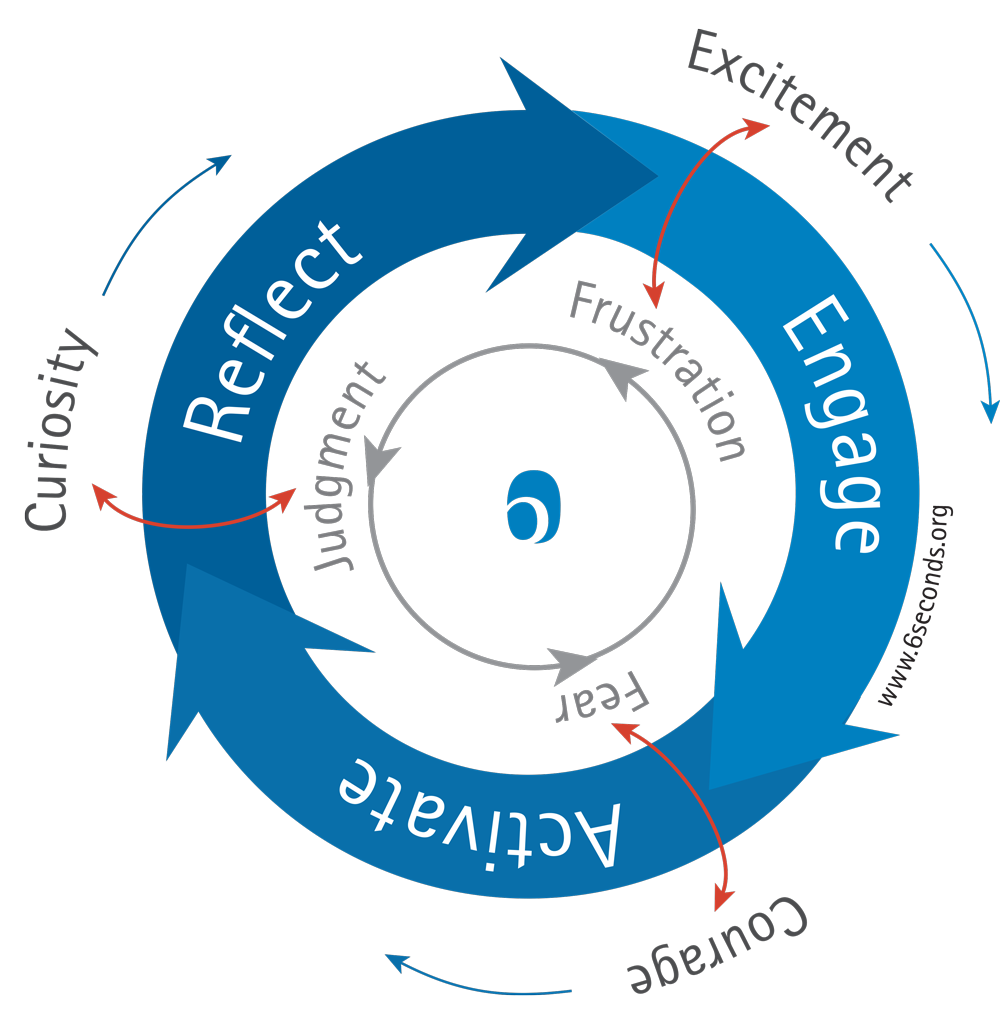
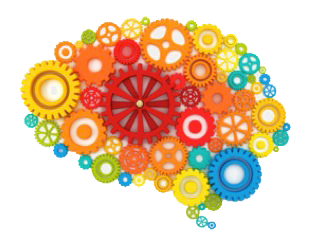
For learning to fuel transformation, it’s a process of change. The CHANGE MAP offers a structure that incorporates both rational & emotional processes for change — and creates a simple template to build learning toward transformation.
What’s “the way” of a Six Seconds facilitator, educator, manager, coach… ? We’ve developed six principles that define our approach, and they’re all based on beliefs about learning. For example, if you really believe “wisdom lives within,” will you do more telling, or more asking?
Our brains are built to learn — but most learning experiences actively undermine the brain’s ability to engage in content and make meaning. Rather than “running the engine cold,” there are simple ways to activate hot cognition.
Social emotional learning?
Some authors talk about “social emotional learning” (SEL) as a curriculum for schools. At Six Seconds, we take a much broader and deeper view: Social emotional learning is the process for growing & practicing emotional intelligence.. and it sets a context for great learning.
The three key ingredients apply to all learning — math class can be boring, or it can be lifechanging. A corporate onboarding workshop can be mundane, or it can transform the employee’s engagement in the new role. By applying these tools, you can turn any learning experience into something deeper, more meaningful, and long-lasting.
What's new in emotional intelligence?
Emotional Intelligence at Work: The Free, Easy Win Most Managers Are Missing
Gallup study compares the biggest gaps in employee vs. manager perceptions. What are managers’ worst blind spots? What are easy wins they could do better to improve team performance?
Is Boredom Bad for Kids? Emotional Intelligence Education News
Let’s unpack boredom and how emotional intelligence can help you with tips to support bored children (and keep your cool!). Keep reading for EQ research and resources you can use for you, your faculty and students.
Effective Emotional Intelligence Coaching: 4 Questions to Improve Client Outcomes with Social and Cultural Insights on Emotions
Improve your emotional intelligence coaching by understanding the social and cultural influences on emotions. Ask these 4 key questions for more effective client relationships
Krish and Anabel: SEL Pioneer and Mentee Share 6 Life Lessons on Empathy, Integrity, and Emotional Intelligence
What are 6 life lessons you’ve learned? Dr. Anabel Jensen, SEL pioneer and Six Seconds President, explores this important question with her 16-year-old mentee.
Voices from the Network: Jeremy Jensen
In this Voices from the Network, we sit down with Police Chief Jeremy Jensen, who is doing emotional intelligence training with his officers in Dubuque, Iowa.
Emotional Intelligence at Work: Is There Hope for Toxic Workplaces?
The remarkable transformation at Westcomm Pump offers a blueprint for turning around workplaces with depleted morale and trust issues, using the Team Vital Signs assessment.
- Coaching Through the Emotional Recession: Three Practical Tips for Trauma-Informed Coaching - May 1, 2024
- Knowing Isn’t Coaching: Three Emotional Intelligence Tools for Professional Coaches - April 3, 2024
- Coaching Down the Escalator: 3 Emotional Intelligence Tips forCoaches to Reduce Volatility & De-escalate Conflict in a Polarized World - March 6, 2024





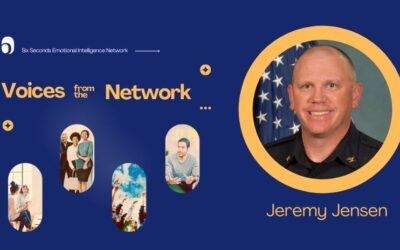

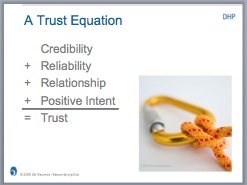
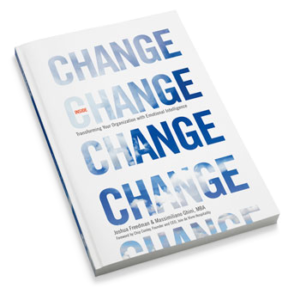
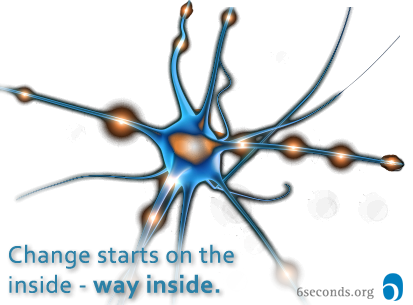
Enjoyed reading this again – thanks Josh – like how this applies to all aspects of life!
The secrets of life are very good and wonderful.
Have you had any experience with those who have Aspergers? They are challenged with social and emotional intelligence.
Hi Sue – yes. Let me introduce you to one of the educational psychologists on Six Seconds’ team: Barbara Fatum — she would be a good person with whom to discuss this need.
Hi Joshua,
Thanks for the sharing. I am doing a research on the impact of Structured Self-reflection on self-awareness and leadership performance. The Change MAP is definitely a good framework to begin and I agreed with some of them that we need to translate this to teaching and learning.
A pity that the last workshop in Singapore, I could not attend….I wish to attend your trg….perhaps in Singapore or Malaysia…
Hope to see you soon..
Cheng Boon
Hi Cheng Boon – I’m very intrigued by that research question. In the Six Seconds’ framework, there’s also a question of competency. For example, someone could follow the MAP and do the step of reflection, but if he doesn’t have the EQ competencies to accurately identify his own behaviors and emotions, he might not get great value from this step. 🙂 Probably we need (at least) 3 components:
:: The sense of value + discipline to put a process of reflection into action
:: The competencies to collect accurate and useful data in this process
:: The business + strategic intelligence to apply the insight to do a good course adjustment
The MAP provides the first. The second we measure with the SEI assessment, the third with the Vital Signs assessment.
I’ll be in MY in June, and SG in Nov — hope to see you one or both! In the meantime, if you want to add an assessment piece to the research, feel free to email me or contact here.
– Josh
It’s all new to me,I must confess and it makes me want to E/A/R it more. How it is used with little kids is going to be interesting and challenging…
Hi Suniti – how little? In our model school, http://www.synapseschool.org , the whole curriculum (all subjects) use a similar approach (they have it in an even more detailed, step-by-step process) — it begins with play. In our Self-Science curriculum, we’ve written all the lessons in this format — there are also lessons in our new online lesson library in this format: http://staging.6seconds.org/lessons
BTW – the http://staging.6seconds.org/lessons library is in “beta” but has some great content for kids and for adults.
The EAR cycle has given me a structure to what I was doing intuitively. Thank you Mr. Freedman!! 🙂
Thanks Geetha! On behalf of the whole Six Seconds team, you are most welcome.
I have personally seen and experienced how this approach to learning works. I am curious about how it might work in situations where increasing cognitive skills is the goal. Specifically, if there are cognitive concepts and then analytical applications (e.g., formulas, spreedsheet analysis, etc.) that need to be imparted or improved, how does this model play out. Do you have any specific examples?
Hi Allen – I think a common assumption is that emotionally rich learning works well for emotionally laden topics. The research from “brain based learning” is that this is true for all types of content. A good, simple book on this is Medina’s Brain Rules. Eric Jensen also has written a lot on this. Let’s take learning how to multiply fractions. A conventional approach would be to explain the rule (not the meaning) and then to have the student practice the method ’till he could repeat it on the test.
Using the E/A/R process, we’d start by setting the context, for example by introducing a project where it was actually useful or important to multiply fractions — the goal to get the student to WANT to learn this.
Then, we make the learning rich so it comes alive – probably by building, taking apart, something more than a worksheet!
In “Reflect” we ensure the student knows what he knows – he applies the skill and considers how it’s useful.
The result is we go from “memorize a rule” toward “make meaning of a concept” — and the result is that learning goes much deeper.
Does that help?
Hi! There are so many good brilliant schemes prepared and designed by yet more brilliant people on the paper and remain good on paper only, not been used by educators around many places in the world.
They say and give reasons as, problems with population, or problems with technical support, or expertise support, or financial support etc. may be they are not wrong; but There are things which are easy, understood by anyone, and integrated from creating interest to Transformation at 6 seconds.
When 6seconds an NGO continuously and consciously working to take learning with transformation forward with PURPOSE It feels that Still there can be good days back again in education field.
I hope this advance research will be incorporated soon with many old, new, advanced education systems around the globe. Thanks for sharing.
Hi Arati – I strongly agree with you: There are so many GREAT IDEAS that only have meaning on paper. The opportunity and challenge is to bring it to life… which is a learning process! 🙂
Thank you Josh, I am sure my research will give me both, Opportunity and challenge. 🙂
This was very informative. I hope you provide more of these types of communications.
Hi Josh, I’d like some clarification. In the article you say hot cognition is when “thinking is accelerated and deepened”. My understanding of hot cogntion is when someone makes quick decisions, based on emotional and personal goals that influence their judgement, before fully analyzing the situation. And cold cognition is making decision from a purely intellectual perspective. With your meaning of hot cognition it seems that the emotion and intellectual are aligned in the decision making. I know that brain based learning is always evolving as we learn more about the brain, so my understanding my be outdated. Where am I off the mark?
Hi Emelie –
Apparently the term “hot cognition” has been around quite some time, perhaps since the ’60s. Since society and psychology had a strong “anti-emotion” bias, it’s no surprise that some people would consider the notion of emotionally-laden thinking as flawed thinking. But now we know that there is NO thinking without emotion, so there is no “cold cognition” in the 1960s sense — without emotion there is no evaluation. In recent years work by people like Mihaly Csikszentmihalyi have studied what’s happening in the brain when we’re at our most engaged learning state (Csikszentmihalyi talks about “flow”). My understanding of that research is that when the brain is activated in this “emotion + cognition” way, we’re moving into that state of optimal processing.
Warmly,
– Josh
Hi Josh,
Thanks for the clarification and for connecting the information regarding Mihaly Csikszentmihalyi and “flow.” to a book I’m currently reading, called “Shine,” by Dr. Hallowell. He references MC’s flow. I’m going to research this. I very much appreciated your article and found it very worthwhile; especially since those topics you write about are almost always connected to other areas I’m learning about. You help me connect the dots:)
Hi Emelie – we just added a function so when there’s a reply you get an email – so just letting you know I replied to you on the blog!
HI! I liked the three red arrows in the FIGURE. They show the CHANGE. You are asking readers, at the end,
Can you see the phases? Yes I can hear them …… they are ….. EAR. Thanks for sharing. Arati
Dear Gentleman ,
It was nice to speak to mr Dexter. Would be possibly out of India for 2-3 months from March 15 2012 onwards . Would be happy to work in association with you there is huge scope in India for spreading awareness and making a difference.
Thanking You
with regards
Sunila Banerjee
Interesting to compare this model with the 4-MAT system for course design. It’s a welcome reminder that there’s always more than one way to slice the pie – I like the simplicity of this model!
Hi Andy – to me, the conventional 3 steps (tell them what you’ll tell them… tell them… tell them what you told them) is pretty much opposite of the constructivist approach. Yes, it’s the norm, esp in business… and many people expect you to follow this structure… but it can easily kill the discovery process and ownership of learning. Imagination, wonder, and creativity are key for learning! But that said, one could change the “3 tell” words and see that in both approaches there are 3 steps in a kind of “sandwich” approach. 🙂
Hi Joshua,
I agree – I was hoping to make the reader aware of the 4-MAT approach as an interesting comparison with the MAP, rather than advocating those conventional 3 steps. I hope the article I linked to doesn’t read that way!
Best wishes,
Andy